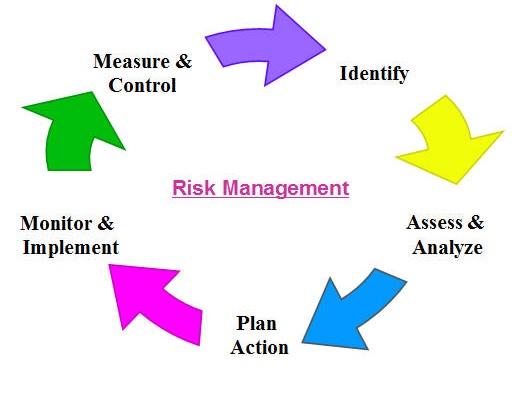

Whenever we plan to introduce a product in the market, we came across many difficulties and challenges to face, in which Risk management is the most crucial element to consider. It may be defined as the process in which identification of risk or product risk, analysis to prioritize and risk treatment like tasks are taken to get rid from future obstacles. It may be further defined as an activity in software testing which helps business in long-run. This process is implemented in major levels like project level, industry level, program level and international level.
The given cyclic structure is a process of risk management which should be followed by the testers to get some quality output.

The first step in the risk management is to identify project or product based risks by applying certain strategies or techniques. This identification is conducted by the experienced individuals with project resources to make this identification more effective. It's important to document a detailed report of risk identification so that it would be helpful at the time of changes in project objectives or for businesses.
The risk analysis is the next step in the risk management process. In this phase, the significant study of risk should be conducted by applying serious effort to analyze in-depth attributes. Sometimes, there should be an appropriate discussion session with some expertise professionals to make this analysis more beneficial.
It's a simplified and organized procedure for understanding and applying things accurately. There are the two major aspects in Risk prioritization, which are Risk Impact and Risk Probability. We need to take care about these fundamentals at the time of prioritization. We should take a note while prioritizing -- the impact of processes is negative or positive. On the other hand, Risk probability can be easily determined by applying mathematical values by experts. With the help of these facts, we can surely come across in accurately prioritizing the risks.
Risk Treatment is identified as a functional process comprising of certain specified activities carried out in the direction of overall treatment process:
There exists thousands of projects which are affected from risk related measures but the major problem arises when an organization of project team haven’t detected that risk. This complete study helps in understanding the whole process of risk management and its in-depth structure in software testing to manage and mitigate the risks prevailing in the software systems or projects.
Advertisement: